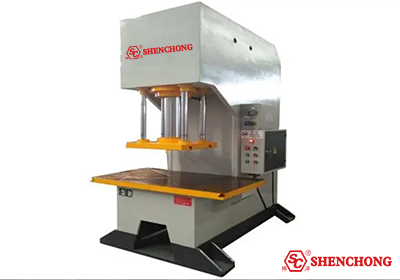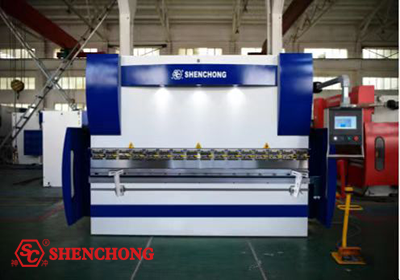

Hydraulic press is a machine that uses liquid as the working medium and is made according to Pascal's principle to transfer energy to realize various processes. The hydraulic press machine generally consists of three parts: the machine (host), the power system and the hydraulic control system. Hydraulic press is classified into valve hydraulic presses, liquid hydraulic presses, and engineering hydraulic presses.
The basic principle is that the oil pump transports the hydraulic oil to the integrated cartridge valve block, and distributes the hydraulic oil to the upper cavity or lower cavity of the oil cylinder through each one-way valve and relief valve, and makes the oil cylinder move under the action of high pressure oil. It is a device that uses liquid to transmit pressure. Liquids obey Pascal's law when transferring pressure in a closed container
This equipment is especially suitable for bending, forming, flanging and other processes of central load parts. After being equipped with a punching buffer device, it can also be used for punching and blanking processing. product of choice.
It is used for drawing, tumbling, bending and stamping of sheet metal parts, and can also be used for general pressing processes. Devices such as punching buffers, punching, and moving worktables can be added according to user needs.
In addition to forging and forming, the three-beam four-column hydraulic press can also be used for straightening, pressing, packing, pressing blocks and pressing plates.
It can also be used for the pressing process of shaft parts, the calibration, crimping, and pressing process of profiles, and the bending, arguing, shaping, embossing, forming, stretching, and pressing processes of plastic materials of sheet parts, such as stamping, bending, turning. It can also be used for calibration, press fitting, pressing and molding of plastic products and powder products. It is also called universal hydraulic press because of its wide range of applications.
According to the structure, it is mainly divided into: four column type, single column type (C type), horizontal type, vertical frame, universal hydraulic press, etc.
According to the use, it is mainly divided into metal forming, bending, stretching, punching, powder (metal, non-metal) forming, press-fitting, extrusion, etc.
Hydraulic press is suitable for sheet drawing, punching, bending, flanging, cold extrusion metal forming of metal materials, and various stamping processes such as transverse pressing, bending pressing, turning through, and correction. It is also suitable for correction, press-fitting, and powder products. Although the hydraulic press is widely used in the pressing and molding of abrasive products, as well as the pressing and molding of plastic products and insulating products, several aspects should be paid attention to in the selection of hydraulic presses:
1. Speed: that is, the class output.
2. Power consumption.
3. Self-weight: The self-weight of the machine reflects whether the materials are sufficient, and partly reflects whether the product is durable.
4. Sealing performance: The sealing performance of hydraulic machinery directly affects the service life and life.
5. Degree of integration: Models with a high degree of integration avoid the time consumption of installation and debugging, and are also convenient for transportation
6. Service life: It is best to ask the manufacturers who have bought similar products.
7. Materials: For example: the fuselage steel castings are more durable than the cast iron castings

There is an essential difference between a hydraulic press brake machine and a hydraulic press. Although they are both used for sheet metal processing, the structural principle and the final processing accuracy are different. The essential difference between a press brake machine and a hydraulic press is their oil cylinders. The type of their oil cylinders are different. The cylinder of the hydraulic press brake is equipped with a mechanical stop. It can pressurize at any point within the stroke range without resistance, while the press machine is completely different. The press machine only work after it under the resistance of the plate, so their final processing accuracy is different. The accuracy of the press brake machine is higher, and the pressure also has its advantages. The press machine can be performed within a certain range. The processing of eccentric load type is mostly used for special shapes of different sizes, while the hydraulic press brake cannot be eccentric load and can only be used for relatively regular bending processing